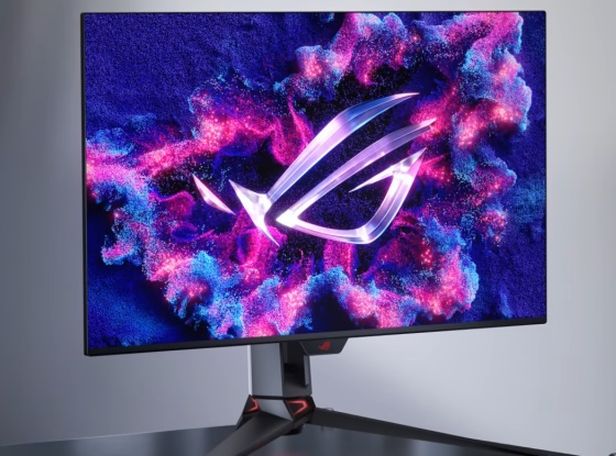ROG Swift OLED. Asus Introduces the World’s First Dual-Mode Gaming Monitor
It’s presumed that ASUS used OLED panels supplied by LG for this monitor.

ASUS has unveiled its new ROG Swift OLED PG32UCDP monitor, set to debut at CES 2024. This innovative product is unique in its ability to switch between two display modes: 4K resolution with a 240 Hz refresh rate and Full HD at 480 Hz. It’s speculated that ASUS used an OLED panel, possibly supplied by LG, to create this monitor.
Following ASUS’s announcement, LG also entered the market with enhanced UltraGear gaming OLED monitors. A prime example is the 32GS95UE, a 32-inch OLED monitor supporting 4K resolution at 240 Hz and 1080p at 480 Hz. This monitor boasts impressive features, including a wide DCI-P3 color gamut (98.5%) and an instant response time of 0.03 ms. Next year, LG plans to introduce even more dual-mode monitors.
Earlier this year, ASUS introduced the ROG Swift OLED PG32UCDM with a 31.5-inch OLED screen, a peak brightness of 1000 nits, and 4K resolution at 240 Hz. It’s likely that this monitor used a Samsung panel. Leading monitor manufacturers are competing to offer 32-inch OLED monitors with 4K resolution and 240 Hz refresh rates, utilizing panels from both LG and Samsung.
The ROG Swift OLED PG32UCDP will feature a nearly bezel-less 32-inch panel and a robust stand, possibly with DisplayPort 2.1 support. Although the price has not been announced, it’s expected to be higher due to its innovative technologies.
The introduction of the ASUS ROG Swift OLED PG32UCDP marks a significant advancement in gaming monitor technology. The dual-mode feature offering both high resolution and high refresh rate caters to various gaming needs. High-resolution 4K provides stunning visual clarity for games with detailed graphics, while the 480 Hz Full HD mode is ideal for fast-paced competitive games where every millisecond counts.
The use of OLED technology in these monitors brings several advantages, such as higher contrast ratios, more vibrant colors, and faster response times compared to traditional LCD panels. This technology enhances the gaming experience by providing deeper blacks and more immersive visuals.
The competition between ASUS and LG in the gaming monitor market signifies a trend towards more feature-rich, versatile gaming displays. Consumers can expect continued innovation in this area, with manufacturers likely to introduce new features like HDR support, improved color accuracy, and adaptive sync technologies.
These advancements in gaming monitors are not only beneficial for gamers but also for professionals in fields like graphic design and video editing, where color accuracy and image clarity are crucial. The introduction of such high-performance monitors also reflects the growing importance of gaming and multimedia consumption in the tech market.
The ASUS P13R-M is an Intel® Xeon® E-2400 LGA 1700 micro-ATX server motherboard

